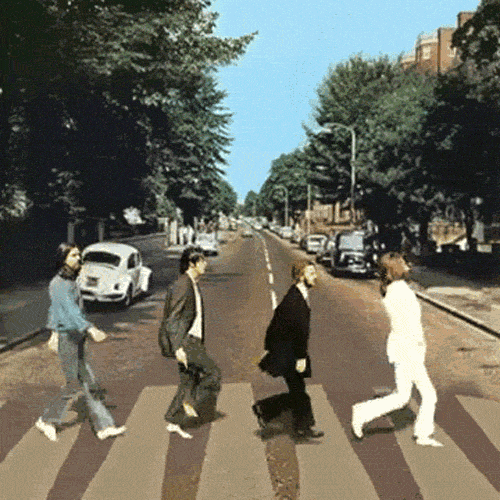A study conducted on cardiovascular mortality in US adults found the steps taken on daily walks had major effects upon health and longevity. What was unexpected perhaps is the actual numbers necessary to gain maximum benefits.
We've all heard, walking is good for our health. Maybe you were told 10,000 or even 15,000 steps a day. There are plenty of tech toys and apps to keep us on track, meeting our daily step goals. However, the number of steps they've been marketing is more than actually necessary.

A study published in BMC Public Health conducted in a joint effort by Yale University School of Medicine and Central South University, found that 8,250 steps was only required to gain over-all longevity and health. A total of 9,700 steps was a perfect amount for heart health. The study wrote, "...mortality risks decreasing substantially at daily step counts below 8,250 and 9,700 steps per day for all-cause and cardiovascular mortality."
Helpful analysis
That's a considerably smaller number than the suggested lore of 10,000 steps. Keeping in mind the distance covered by those 300 steps for the average human equals about a football field.
One very important conclusion from the study follows the 'law of diminishing returns,' meaning by increasing a single factor of production (walking) has incrementally smaller affects on output (health.) That once those needed steps were met, the value in walking further was minimal. The trending upward curve found in taking the steps to make healthy gains flattened out after the 8, 250 footsteps. 
The sweet spot for your daily walks
It's important to note that the study was very clear daily walking has a massive affect upon our health. In the studies conclusion it stated, "...that even moderate increases in daily steps can substantially reduce mortality risk."
With more sedentary lifestyles due to the advancements of technology, most of us aren't out hunting down our daily nutritional needs, exercise is critical to physical and emotional health. Outside a quick jaunt to the grocery store, it's easy to find ourselves locked in a chair and cubicle staring at a screen all day.
A quick refresher on the why
Plain and simple, if you are minimally active and incorporate any form of exercise, the advantages are monumental. According to The National Institute on Aging, there are 3 basic types of exercise: aerobic (cardio), muscle-strengthening (resistance and strength training), and balance (stability and coordination.) Being active not only delays death, but slows or worse case, manages chronic disease.
Dr. Mahathir Mohamad, who just turned 100 July 12, 2025, credits his longevity to physical activity. He's quoted in Times Entertainment as saying, "You have to remain active, sit down, and just do nothing that is bad for your health."
Final Thoughts

If you want to live longer and feel better, it's a scientific must. The good news is that any little bit helps. The amount necessary is probably way less than you've been told. You don't have to run a marathon, hike Everest, swim the Atlantic Ocean, or bench press 300 pounds to prove to anyone you're a fit guru.
How about we all start proving to ourselves we care about our lives and want to feel better. That's more than good enough.




















 Robin Williams performs for military men and women as part of a United Service Organization (USO) show on board Camp Phoenix in December 2007
Robin Williams performs for military men and women as part of a United Service Organization (USO) show on board Camp Phoenix in December 2007 Gif of Robin Williams via
Gif of Robin Williams via 
 A woman conducts a online color testCanva
A woman conducts a online color testCanva A selection of color swatchesCanva
A selection of color swatchesCanva A young boy takes a color examCanva
A young boy takes a color examCanva 


Will your current friends still be with you after seven years?
Professor shares how many years a friendship must last before it'll become lifelong
Think of your best friend. How long have you known them? Growing up, children make friends and say they’ll be best friends forever. That’s where “BFF” came from, for crying out loud. But is the concept of the lifelong friend real? If so, how many years of friendship will have to bloom before a friendship goes the distance? Well, a Dutch study may have the answer to that last question.
Sociologist Gerald Mollenhorst and his team in the Netherlands did extensive research on friendships and made some interesting findings in his surveys and studies. Mollenhorst found that over half of your friendships will “shed” within seven years. However, the relationships that go past the seven-year mark tend to last. This led to the prevailing theory that most friendships lasting more than seven years would endure throughout a person’s lifetime.
In Mollenhorst’s findings, lifelong friendships seem to come down to one thing: reciprocal effort. The primary reason so many friendships form and fade within seven-year cycles has much to do with a person’s ages and life stages. A lot of people lose touch with elementary and high school friends because so many leave home to attend college. Work friends change when someone gets promoted or finds a better job in a different state. Some friends get married and have children, reducing one-on-one time together, and thus a friendship fades. It’s easy to lose friends, but naturally harder to keep them when you’re no longer in proximity.
Some people on Reddit even wonder if lifelong friendships are actually real or just a romanticized thought nowadays. However, older commenters showed that lifelong friendship is still possible:
“I met my friend on the first day of kindergarten. Maybe not the very first day, but within the first week. We were texting each other stupid memes just yesterday. This year we’ll both celebrate our 58th birthdays.”
“My oldest friend and I met when she was just 5 and I was 9. Next-door neighbors. We're now both over 60 and still talk weekly and visit at least twice a year.”
“I’m 55. I’ve just spent a weekend with friends I met 24 and 32 years ago respectively. I’m also still in touch with my penpal in the States. I was 15 when we started writing to each other.”
“My friends (3 of them) go back to my college days in my 20’s that I still talk to a minimum of once a week. I'm in my early 60s now.”
“We ebb and flow. Sometimes many years will pass as we go through different things and phases. Nobody gets buttsore if we aren’t in touch all the time. In our 50s we don’t try and argue or be petty like we did before. But I love them. I don’t need a weekly lunch to know that. I could make a call right now if I needed something. Same with them.”
Maintaining a friendship for life is never guaranteed, but there are ways, psychotherapists say, that can make a friendship last. It’s not easy, but for a friendship to last, both participants need to make room for patience and place greater weight on their similarities than on the differences that may develop over time. Along with that, it’s helpful to be tolerant of large distances and gaps of time between visits, too. It’s not easy, and it requires both people involved to be equally invested to keep the friendship alive and from becoming stagnant.
As tough as it sounds, it is still possible. You may be a fortunate person who can name several friends you’ve kept for over seven years or over seventy years. But if you’re not, every new friendship you make has the same chance and potential of being lifelong.